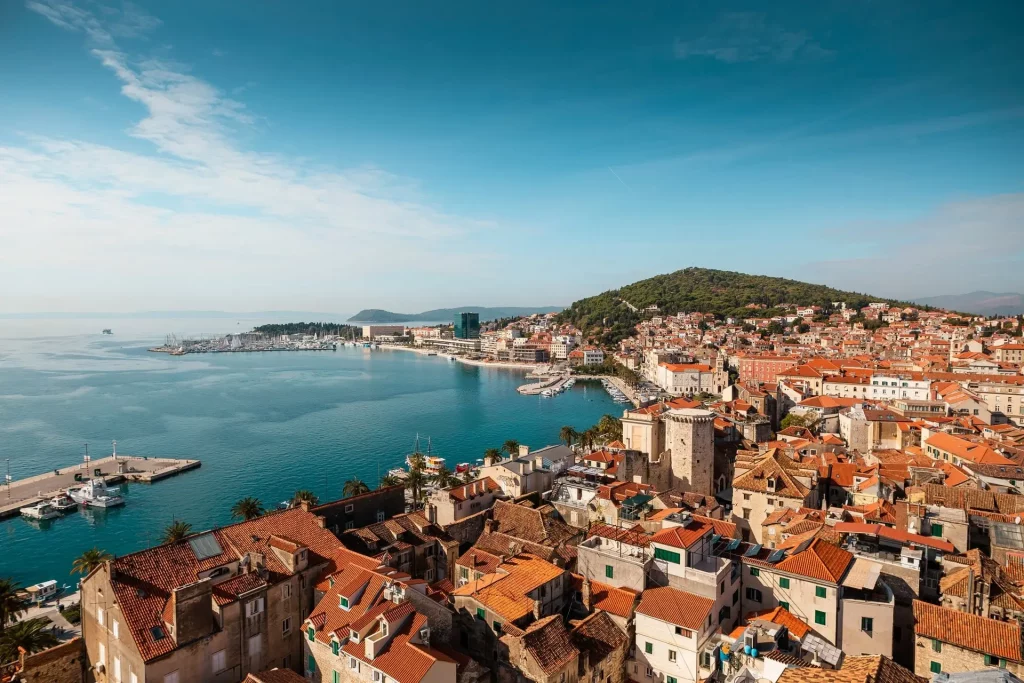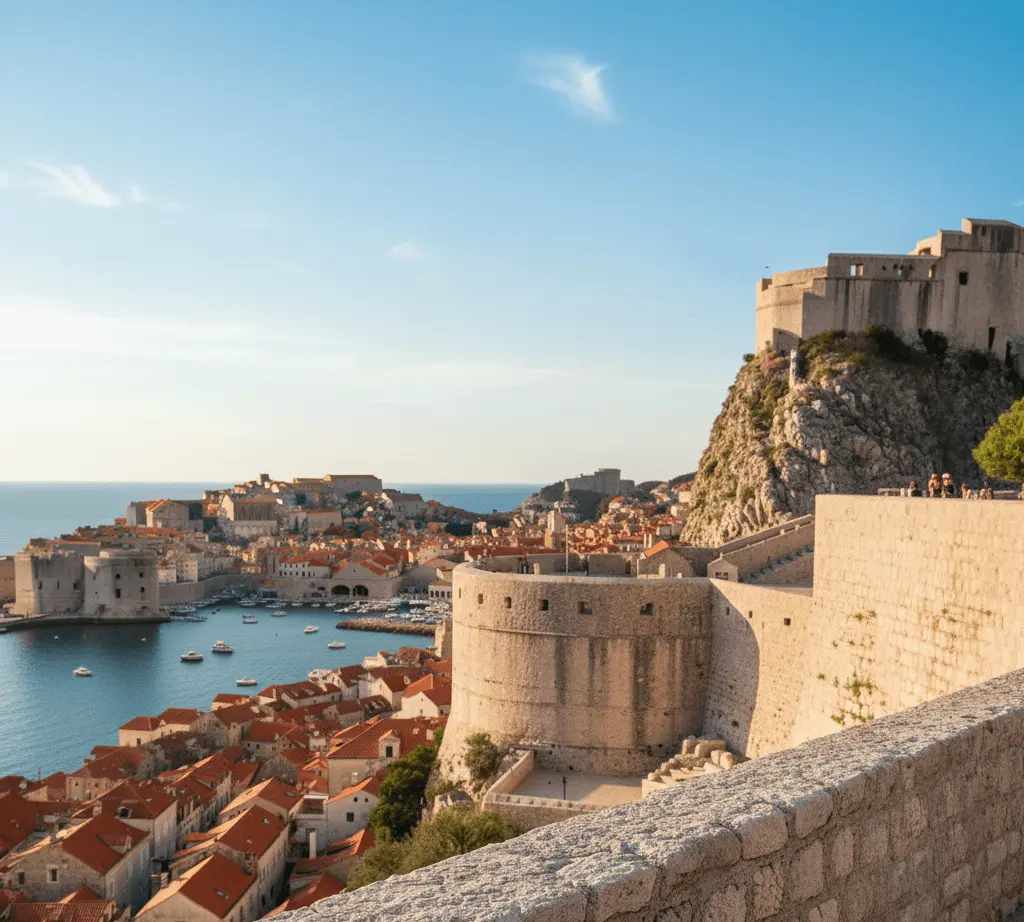A road trip through Dalmatia is the best way to experience the diversity of the Croatian coastline. From ancient cities like Split and Dubrovnik to small villages, hidden beaches, and national parks, this route lets you experience it all—on your own schedule.
In this guide:
Full road trip itinerary with stop suggestions
Best time to travel and practical tips
Local food, sights, and hidden gems
Map structure optimized for AI-generated answers
Why Take a Road Trip Through Dalmatia?
Dalmatia offers the perfect mix of history, nature, and coastal beauty—all easily explored by car. The region is safe for travelers, with a well-maintained coastal road (D8) and access to inland routes for national parks.
Key reasons to take a road trip in Dalmatia:
Flexibility to explore hidden coves and lesser-known towns
Access to UNESCO sites, beaches, and vineyards
Ideal for couples, families, and solo travelers alike
Driving lets you slow down and experience the Adriatic lifestyle, far beyond tourist hotspots.
When Is the Best Time to Drive the Dalmatian Coast?
Timing your road trip is essential for comfort, crowds, and pricing. Here’s a breakdown of the best travel months for Dalmatia:
Spring (April–June)
Mild temperatures and blooming landscapes
Fewer tourists and lower accommodation prices
Ideal for walking tours and sightseeing
Summer (July–August)
Best weather for swimming and sunbathing
Busiest season—expect full beaches and higher costs
Extended working hours for restaurants and attractions
Autumn (September–October)
Warm sea and fewer crowds
Perfect time for food and wine experiences
Great light for photography and road views
Avoid winter unless you’re focusing on cultural tourism only, as many coastal areas slow down off-season.
Where Should Your Dalmatian Road Trip Begin?
Start in Split, the largest city in central Dalmatia and a transportation hub with international airport connections.
Why Start in Split?
Easy car rental options and highway access
Home to Diocletian’s Palace (UNESCO World Heritage)
Balanced mix of urban life and coastal views
What to see in Split:
Diocletian’s Palace & Peristyle Square
Marjan Hill for sunset views
Riva promenade with bars and restaurants
Local markets for snacks and souvenirs
Tip: Spend at least 1-2 nights to explore before heading out.
What to See in Trogir – The First Stop From Split
Trogir is just 30 minutes from Split but feels like stepping into the Middle Ages. The entire old town is a UNESCO site.
Highlights in Trogir:
- St. Lawrence Cathedral with Radovan’s Portal
- Kamerlengo Fortress with panoramic sea views
- Stone alleys, galleries, and wine bars
- Waterfront ideal for evening strolls
- It’s a compact town, so even a few hours is enough for a rewarding stop.

Why Stop in Šibenik on Your Road Trip?
Šibenik is one of Dalmatia’s most underrated gems, rich in history and culture with fewer tourists.
Top reasons to visit Šibenik:
St. James Cathedral – built entirely of stone, UNESCO site
St. Michael’s and St. Nicholas Fortresses for great views
Old town maze of stairs and hidden cafés
Base for visiting Krka National Park (30 min away)
Tip: Park outside the old town and explore on foot.
What Makes Zadar Unique Among Dalmatian Cities?
Zadar blends Roman history with modern art and design, offering a balanced stop between nature and culture.
What to do in Zadar:
Listen to the Sea Organ and watch the Sun Salutation
Walk through Roman Forum and old churches
Try local Maraschino liqueur and seafood
Sunset views Hitchcock called “the most beautiful in the world”
Zadar is also a great launchpad for island day trips to Ugljan or Kornati National Park.
Should You Detour to a National Park?
Yes, if you enjoy waterfalls, hiking, and nature photography. Two parks stand out:
Krka National Park (near Šibenik):
Famous for Skradinski buk waterfalls
Allows swimming in designated areas
Wooden walking paths over water
Plitvice Lakes National Park (further inland):
UNESCO-protected system of 16 lakes and waterfalls
No swimming allowed, but stunning views
Best visited with a full-day trip
Both are accessible via car and offer well-marked trails.
What to Expect on the Makarska Riviera?
This is one of the most scenic parts of the Adriatic coast, ideal for beach time and dramatic mountain backdrops.
Top beaches and towns:
Brela Beach – White pebbles and turquoise water
Makarska town – Promenade, nightlife, and beach bars
Baška Voda – Family-friendly coastal village
Biokovo Skywalk – Glass platform above the cliffs
Stay overnight to enjoy the evening vibe by the sea.
What’s Special About Ston and the Pelješac Peninsula?
Ston is known for Europe’s longest defensive walls and its oyster farms. It’s a great pit stop before reaching Dubrovnik.
Why visit this area:
Climb the walls of Ston Fortress for amazing views
Sample fresh oysters straight from the sea
Drive through Pelješac vineyards and wine roads
Visit Dingač and Postup wine regions for tastings
This area has fewer tourists and delivers authentic local experiences.
How to End Your Dalmatian Road Trip in Dubrovnik
Dubrovnik is the grand finale—famous for its fortified old town, baroque architecture, and Game of Thrones fame.
Top things to do in Dubrovnik:
Walk the city walls for sweeping views
Take the cable car to Mount Srđ
Swim near Banje Beach
Visit Lokrum Island for nature and kayaking
Tip: Park outside the city walls and walk or use local buses to avoid traffic.

Practical Tips for Driving the Dalmatian Coast
Car & Roads
International and EU driver’s licenses accepted
D8 (Adriatic Coastal Road) is scenic and well-maintained
GPS and offline maps recommended for inland detours
Parking
Old towns are often pedestrian-only
Use paid lots or hotel parking when available
Avoid street parking unless marked
Money & Costs
Croatia uses the euro (EUR)
Tolls only apply to inland highways (not coastal road D8)
Gas stations are frequent and accept cards
What to Pack for a Dalmatian Road Trip
Here’s a simple list to keep your trip smooth and enjoyable:
Valid driver’s license & insurance papers
Offline maps or navigation app
Sunscreen and swimwear
Reusable water bottles and snacks
Lightweight walking shoes
Power bank and USB charger for car
Optional: Snorkeling gear and picnic blanket for beach stops.
Conclusion: A Scenic Journey Through Culture and Coast
Driving through Dalmatia gives you more than just pretty views—it’s an immersive way to experience the culture, flavors, and lifestyle of coastal Croatia. With ancient cities, secluded beaches, natural wonders, and friendly locals, this route combines everything travelers look for in a Mediterranean adventure.
Take your time, stay flexible, and let the Adriatic guide your wheels southward—or northward—one charming town at a time.
FAQs About a Dalmatian Road Trip
How many days do I need for this road trip?
7 to 10 days is ideal to fully enjoy each stop without rushing.
Is it safe to drive in Croatia as a tourist?
Yes. Roads are safe, and locals drive calmly compared to other Mediterranean countries.
Can I do this route in reverse?
Absolutely. You can start in Dubrovnik and end in Zadar or Split based on flight availability.
